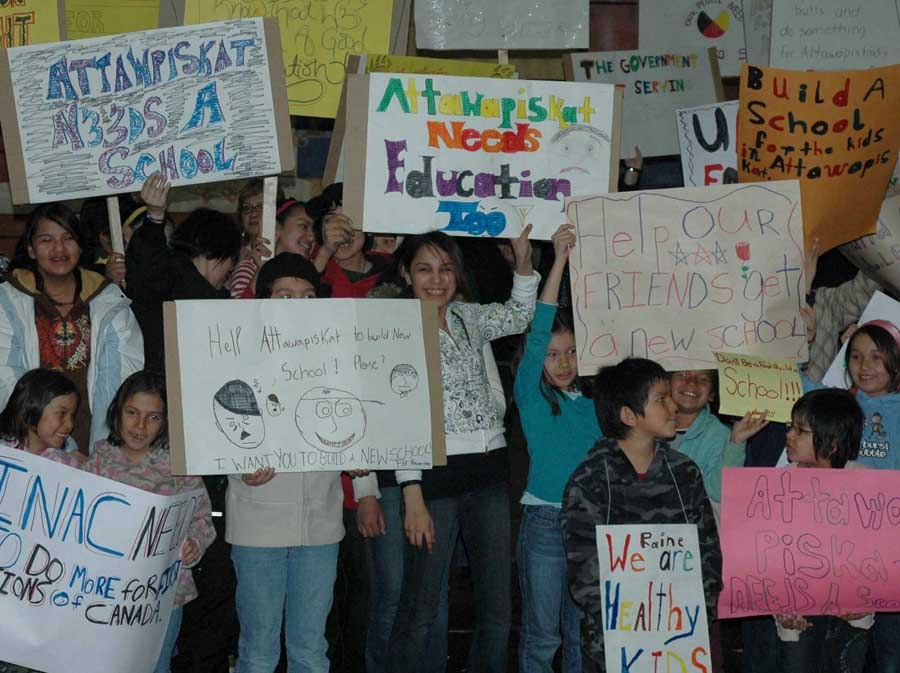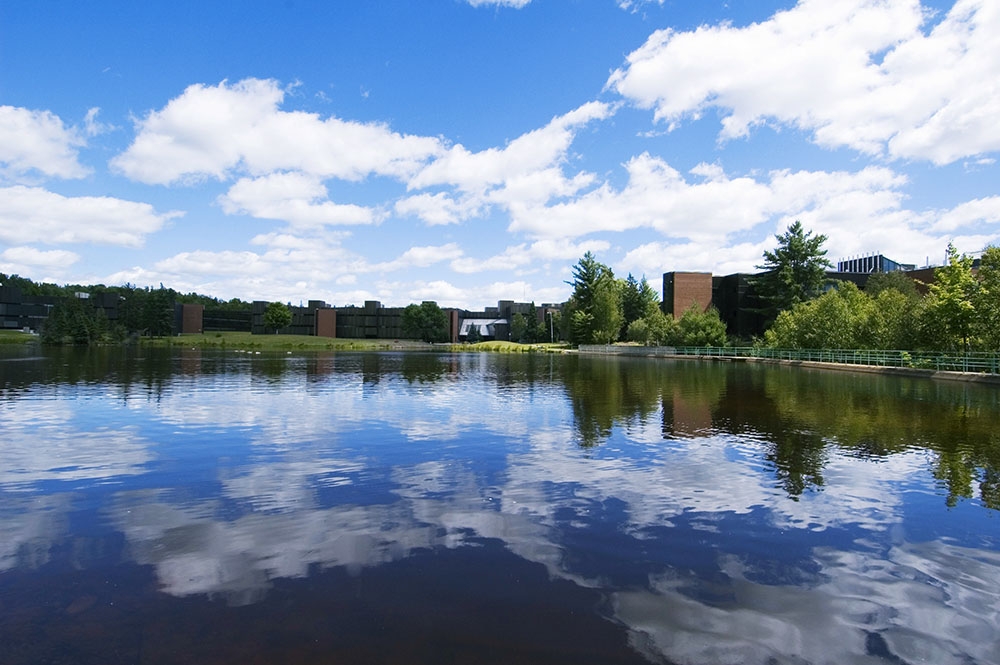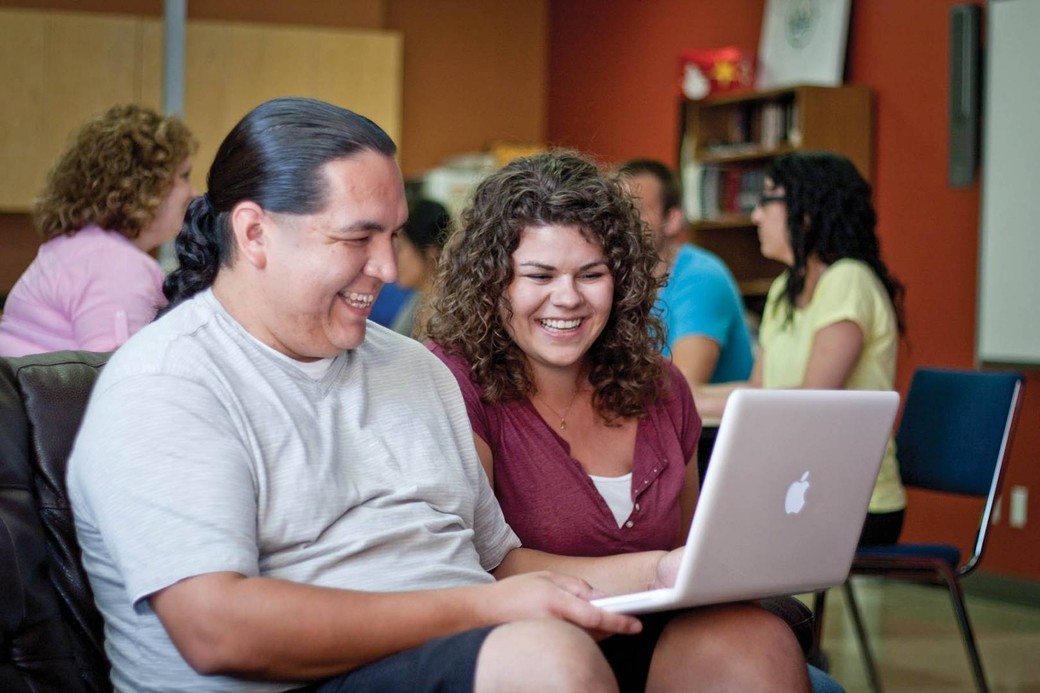
Canadians: Guardians of Equality and Justice
Equal access to social services, education, and safe water, are of the most pressing issues for Canada’s First Nations People. In Canada, there are countless organizations that are working toward the common cause of improving the quality of life for Canada’s First Nations People. These organizations are necessary tools in the process of change. Or, are they?
Indian and Northern Affairs Canada (INAC), the Canadian Human Tribunal, and Health Canada are examples of organizations that have the ability to effect change. The most effective solution would be for these organizations to carry out their mandate without political interference. Unfortunately, decisions seem to be more commonly motivated by politics as opposed to being motivated by efficacy. One example in particular is that of the community of Attawapiskat, a remote northern First Nations community near James Bay.
Andrew is a 12-year-old boy who loves fishing, hunting, and the Ottawa Senators. He wakes up each morning in a house he shares with 11 other people including his parents, siblings, grandparents, aunt, and cousins. In the remote First Nation community of Attawapiskat, the tap water has contaminants, such that he can’t bathe or shower for too long for fear of breaking out in skin rashes or picking up disease. He must make a daily trek each morning with his dad to the water treatment plant to fill their water jugs with potable water. The school he attends is a rundown portable that sits on a contamination site.

Such conditions would be intolerable in Ottawa or any other Canadian urban centre.
In February 2007, on behalf of the Assembly of First Nations (AFN), and the First Nations Family and Child Caring Society of Canada (FNCFCS) , Cindy Blackstock, human rights champion and Executive Director of the Caring Society, submitted a complaint to the Canadian Human Rights Commission alleging that the Government of Canada discriminates against Aboriginal children, such as Andrew, in the provision of a service on the grounds of race and ethnic origin, by systematically underfunding child services on reserve.
Ms. Shirish Chotalia, the Canadian Human Rights Tribunal chairwoman, dismissed the complaint this March arguing that in order to prove discriminatory treatment, there must be a comparator group. She ruled that there was no comparator group. Her logic was that one could not compare on-reserve children to off-reserve children since the source of funding for education and welfare differs for each.
On reserve children are cared for by the federal government while the provinces take care of off-reserve children. Although the inequality was evident, she ruled that “technically” there was no discrimination.
The ruling, says Blackstock, effectively “legalized racial discrimination against vulnerable children on reserve by the Federal Government.”
In her job as executive director of the First Nations Child and Family Caring Society, Blackstock has seen many cases like Andrew’s. In fact, it would be the rule rather than the exception. The tribunal’s decision should give pause to anyone beyond the reserve who may be marginalized or experience discrimination at the hands of our government.

“The implications of this case reach into the households of all Canadians,” said Blackstock, “and into the hearts of all caring Canadians who believe in the equality and sacred treatment of all children.”
The Harper Government is satisfied with the Tribunal’s decision to dismiss the complaint filed by the AFN and the Caring Society.
“We believe that the best way to address the complex issues surrounding First Nations Child and Family Services is through collaboration with First Nations, provinces and territories and not through the Canadian Human Rights Tribunal,” said Margot Geduld, a spokeswoman with the Department of Indian and Northern Affairs Canada (INAC).
Blackstock says that it is typical of this government not wanting any outside criticism of its lack of concern for First Nations’ issues, but that isn’t stopping Blackstock from appealing the decision.
Once a prominent human rights lawyer herself, Ms. Chotalia’s ruling was not consistent with a message that she delivered at a Constitutional Forum in the winter of 1993: “Rather the translation of legal right into ‘living rights’ is subject to the good-will of the citizens of the country who work individually, and collectively with their elected representatives and other communities, to ensure that all persons are treated with dignity, respect and fairness. Canadians, more than their Constitution, are the ultimate guardian of equality and justice.”
In the past Ms. Chotalia has rigorously defended this principle by opposing discrimination based on gender, race, age, sexual orientation, mental disability and physical disability. Ironically, today, she is one of those Canadians who is “the ultimate guardian of equality and justice” yet ruled to let vulnerable kids like Andrew continue to live in unjust circumstances, putting him and the lives of other First Nations children across the country at risk. Her decision effectively supports and rationalizes outdated federal government policies that are inherently discriminatory.
The lack of funding, resources, and accountability also permeates INAC’s administration of First Nations’ Education.
Shannen Koostachin, a young 13 year old from Attawapiskat who became a hero to her fellow students in her community and across the country, recognized the importance of education. She was also aware of the lack of proper educational resources available to on-reserve children. She had attended school in this dysfunctional educational system.

As reported by the Auditor General of Canada, Sheila Fraser, this past June, the education gap between First Nations children and children in the general population is widening. It will take 28 years for First Nations children to meet the national average of secondary school graduations. Shannen, who recognized the educational crisis her community faced, decided to take action and stand up to the Department of Indian and Northern Affairs’ Minister Chuck Strahl.
The crisis began in 1979, when there was a diesel spill under the JR Nakogee elementary school. One hundred and fifty thousand litres of diesel spilled under the school. For the following twenty years, the kids of Attawapiskat would be exposed to a variety of contaminants and toxic substances.
The health effects of this toxic spill were obvious with both staff and children experiencing symptoms such as asthma, headaches, nausea, and fainting. Studies were carried out and reports were produced that identified the school as a “Class 1” contamination site which required immediate remedial action due to its dangerous effects on humans, animals, and the environment. Although at the time this particular parcel of land belonged to the Crown and not the reserve, the federal government turned a blind eye.
Finally, in 2000, at parents’ and staff’s insistence, Indian and Northern Affairs Canada finally closed the school and supplied portables as a temporary solution. Ten year later, the kids still attend school in these portables. In 2007, after promises of a new school from three different Ministers: Robert Nault, Andy Scott, and Jim Prentice, the new Minister Chuck Strahl cancelled all plans of a school. Even though the funds had already been approved and appropriate measures had been taken by the band, he decided that funds would be best spent elsewhere. Member of Parliament for the region, Charlie Angus, challenged Strahl and received the following response:
“…exceptional funding pressures have arisen for the Department’s Ontario Region. This has caused a number of new school projects to be deferred into future years, including Attawapiskat First Nation’s.”
This was not acceptable to the kids of Attawapiskat. Led by student Shannen Koostachin, they began the largest grass roots movement led by children and even brought the issue to the United Nations. People all over the country began to take notice and to support their cause. Canadians all over the country acknowledged the crisis and a letter writing campaign began.
Shannen had the opportunity to meet Minister Strahl. After initial introductions, he asked her what she thought of his office. She said, “I wish I had a classroom that was as nice as your office.” He proceeded to tell the community leaders that building a school wasn’t a priority for his government. As he got up to leave Shannen looked him square in the eye and said, “We’re not going to go away. We’re not going to give up.” She became even more determined.

The Department and Strahl responded to questions from the national community with spin. They referred to a priority list of schools which the Parliamentary Secretary later confirmed was non-existent. The department gave strict orders to stick with “media lines” and under no circumstances to deviate from them. Documents and emails obtained through Access to Information from the Department of Indian and Northern Affairs, uncovered the following directives:
“…and deliver the lines. Stick to them to the letter!! This is another one that just isn’t going to go away.”
“I think we have successfully moved away from focusing on the HC (Health Canada) health and safety inspection message. Hope this helps.”
The whole ordeal now seemed to be a power struggle between Minister Strahl and the community as to who would have the last say.
With Shannen’s relentless efforts to communicate her community’s message to the country, non-profit organizations, unions, students, teachers, and media began to press political buttons that Strahl could no longer ignore. The issue was now becoming visible internationally and it became apparent that Strahl was feeling the burden of the movement.
Finally in December 2009, at the Special Chiefs’ Assembly, Strahl announced that a school for Attawapiskat would be in INAC’s capital plan.
In 2011, ground breaking has still not occurred. Shannen will not get to see her dream come to fruition. The young hero died in a car accident in the spring of 2010. However, her legacy lives on with the organization “Shannen’s Dream” which strives to hold the government accountable to its commitment to First Nations’ children’s education.
Unequal access to social services and education are just two examples of the discrimination that the Government of Canada practices against the First Nations people. The deprivation of the most basic need in life: water, is undoubtedly the most harmful of Constitutional transgressions.
In April 2008, Indian Affairs Minister Chuck Strahl stated at a news conference:”“If you don’t have water and access to clean water in a country like Canada, then we’re doing something wrong.” I guess he was doing something wrong. There were 92 communities under water advisories at that particular time. When Strahl left office in May 2011, there were over 111.
Providing access to safe drinking water is an essential service that is vital to health, human dignity, and life. The Charter guarantees the rights of life, liberty, security of the person, and equality. Governments must provide essential public services of reasonable quality to all Canadians. INAC continues to create initiatives to improve the accessibility of safe water to First Nation communities. The initiatives are failing. The federal government is losing its sense of urgency in addressing the crisis. In 2006, an Expert Panel on Safe Drinking water for First Nations concluded “the federal government has never provided enough funding to First Nations to ensure that the quantity and quality of their water systems was comparable to that of off-reserve communities.”

In Attawapiskat, approximately 1,500 residents share one tap of potable water. The community members must leave their homes, sometimes in minus 40 weather, to get their water from the treatment plant. There, they stand in line in order to fill their bottles of water. The water that flows from the taps in their homes is not potable and at times there have been dangerously high levels of toxic substances reported that would prohibit the community members from even bathing, or showering. Yet the federal government doesn’t view the situation as a crisis. The situation that Attawapiskat faces isn’t extra-ordinary but is rather common among First Nation communities.
The average duration of a drinking water advisory for a First Nation community is 343 days. The maximum has been 12 years. Some communities have lived without adequate water infrastructure for generations.
Some communities such as Pikangikum, Ontario, are in a dire sense of urgency. As of 2010, most residents in the community still lacked running water, access to safe drinking water, and indoor toilets. The report published in 2006 under the authority of the Minister of INAC by the Expert Panel on Safe Drinking water for First Nations, identified communities that were at a high risk of adverse physical and psychological effects due to lack of access to water. These communities were not identified as high risk by INAC in their own risk assessments.
Environment Canada, Health Canada, and Indian and Northern Affairs each hold a degree of responsibility in ensuring safe water on First Nation communities. The community is responsible for infrastructure as well as day to day operations of the water system; however, they are always accountable to Indian and Northern Affairs to demonstrate their efficiencies. The implication of having several federal government organizations engaged in the process of ensuring safe drinking water also provides them with a means of deferring responsibility. Without an end point of accountability, the problem is cyclical.

The question remains, is the Government of Canada violating the constitutional right of First Nations persons living on reserves by not providing them equal access to safe drinking water? Removing the Constitutional question from the issue, is it still right for the Government of Canada to turn their backs and to deprive First Nations people of Canada from their basic human right to water? Ms. Chotalia’s words accurately reflect the necessary view to propel Canada forward with confidence to remedy the situation:
“Canadians, more than their Constitution, are the ultimate guardian of equality and justice.”
The cliché “Time is of the essence” holds true. Former Auditor General Sheila Fraser documented these atrocious conditions on First Nations communities and stated that the conditions are worsening due to the slow action of federal government stakeholders. Fraser remarked: “In a country as rich as Canada, this disparity is unacceptable.”
The current government has the ability to make history by investing in the First Nations People of Canada and to stand up for the values with which we self-identify as Canadian. They are equipped with the knowledge, tools, and resources to make significant positive changes to improve the lives of First Nations People and to do it immediately and effectively. However, the bureaucracy proves to be slow and complicated. As the old Native proverb suggests, perhaps if elected officials walked a mile their moccasins, the wheels of change would move more quickly.









